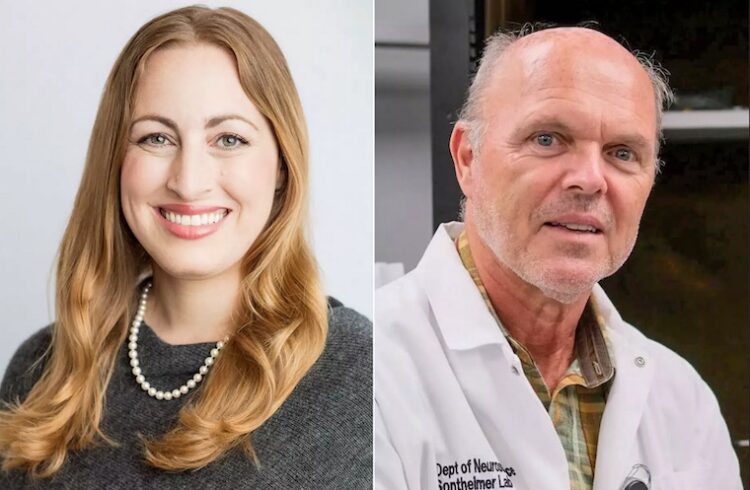
The University of Virginia is opening the new, 102,000-square-foot Carter-Harrison Research Building, which will house nearly 240 scientists and lab personnel comprising an estimated 60 research teams.
The new facility will allow these teams a more collaborative, cross-disciplinary approach to medical research, which in turn will lead to promising discoveries and treatments.
“The opening of the Carter-Harrison Research Building is an important milestone for the University and addresses one of its highest priorities — new laboratory space for biomedical investigations,” said University President John T. Casteen III. “We are especially grateful to the families who helped to make this building a reality and look forward with them to the ground-breaking research that will take place here. It is our intention that this new facility will enhance the University’s commitment to the health and well being of the citizens of the state as our scientists take their work from the laboratory bench to the patient’s bedside.”
The $70.7 million building was financed with a combination of donor support, $20 million in University resources, and $24.3 million from a state bond issue approved by Virginia voters in 2002.
The facility is named for the Carter and Harrison families, who have been instrumental in advancing medical research at the University. The Beirne B. Carter Foundation made a generous gift to provide dedicated space in the new building for the Beirne B. Carter Center for Immunology Research. The Center was founded in 1988 through the generosity of the late Beirne Carter, who died in 1989. A Virginia businessman and philanthropist, he was a member of the University’s Class of 1948. Under Carter’s leadership as chairman and chief executive officer, the Carter Machinery Company, Inc., grew to become one of the largest and most successful Caterpillar dealers in the country. He established the Beirne B. Carter Foundation in 1986.
“The Carters are honored to be associated with the Harrison family and the legacy of philanthropy that has linked us together for generations,” said Beirne Carter Foundation President Rossie Carter Hutcheson. “This building represents our shared commitment to the ideals that have helped shaped the University of Virginia.”
Through the Harrison Family Foundation, the children of the late Mary and David Harrison also made a significant gift toward the building’s construction. A retired lawyer and investment banker, David A. Harrison III was a member of the University’s Class of 1939 and earned a law degree from U.Va. in 1941. Mr. Harrison, who died in 2002, and Mrs. Harrison, who died in 1990, were among the University’s most generous benefactors. Together, they provided exceptional gifts for medicine, as well as law, athletics, the library, undergraduate research, historical archaeology and many other areas.
“The Carter and Harrison families have been friends for generations. How appropriate that we’ve teamed up for this wonderful effort,” said Harrison Family Foundation President Marjorie Webb. “I know that Beirne Carter and my parents, David and Mary Harrison, would be honored to be associated with this building and the groundbreaking research that will take place inside of it.”
The scientists who will be working in Carter-Harrison are attempting to speed discovery in the field of immunology, as well as make advances in the treatment of cancer, infectious diseases, and many other diseases, said Dr. Steven T. DeKosky, vice president and dean of the University’s School of Medicine. Expanded laboratory facilities, he says, are vital to launch new research initiatives, to support the work of top scientists, and to compete for public and private research funding.
“The Carter-Harrison Research Building provides us with a unique opportunity to bring together researchers working on cancer, immunology, and infectious diseases. It is our hope that this close proximity will forge new collaborations and clinical breakthroughs that could offer promising new treatments for some of the world’s most devastating diseases,” said Dr. DeKosky.
Similar in design to MR-5, a neighboring research facility that opened in 2002, the Carter-Harrison Research Building will provide investigators easy access to the intellectual and technological resources of the Health System and other parts of the University. It also will promote translational research, in which scientists strive to convert discoveries at the lab bench into new treatments at the bedside.
“Carter-Harrison also provides our scientists rapid access to our clinicians seeing patients in the University of Virginia Medical Center. This close proximity allows for more collaborations between basic scientists and clinical physicians, with the ability for real-time feedback on new therapies and brainstorming sessions,” DeKosky added.


